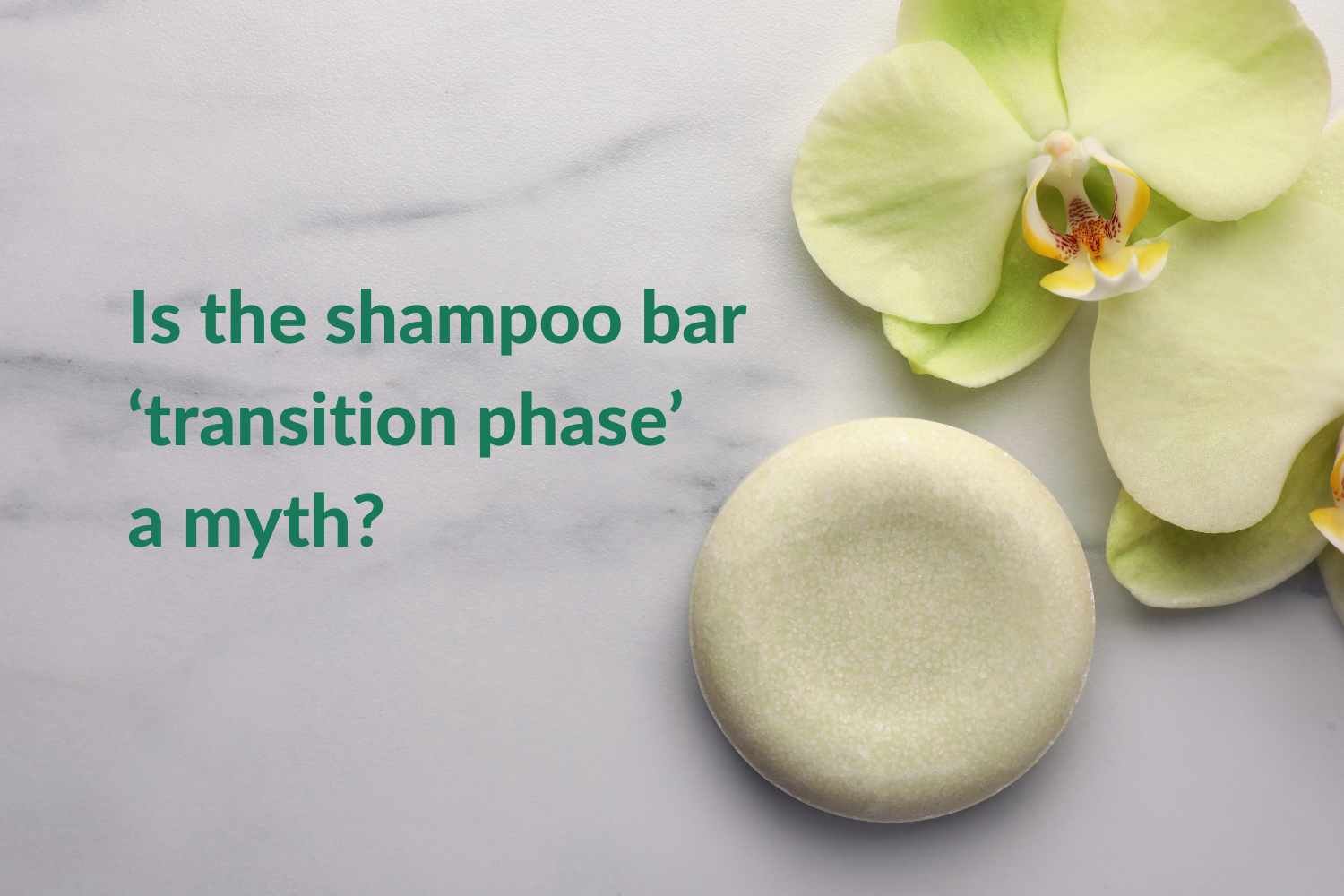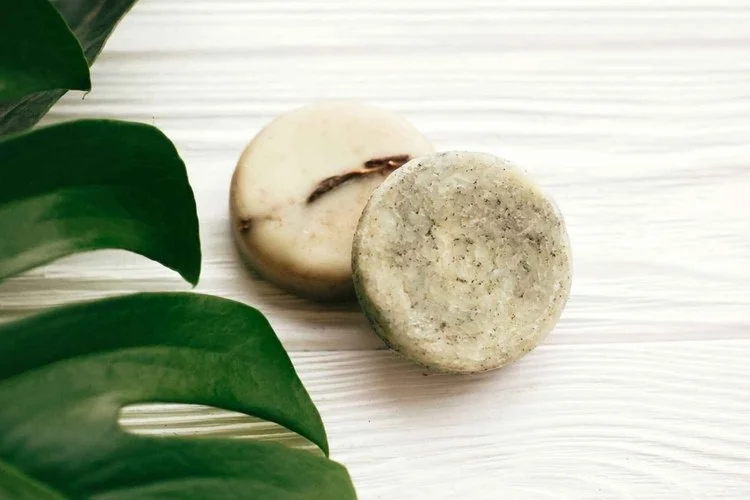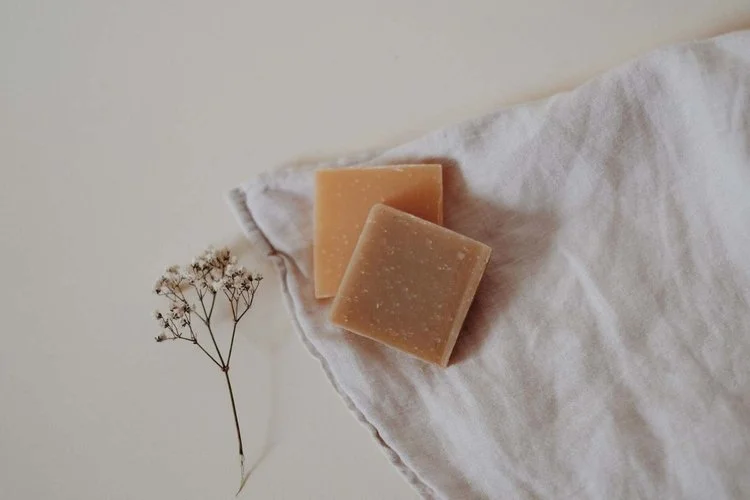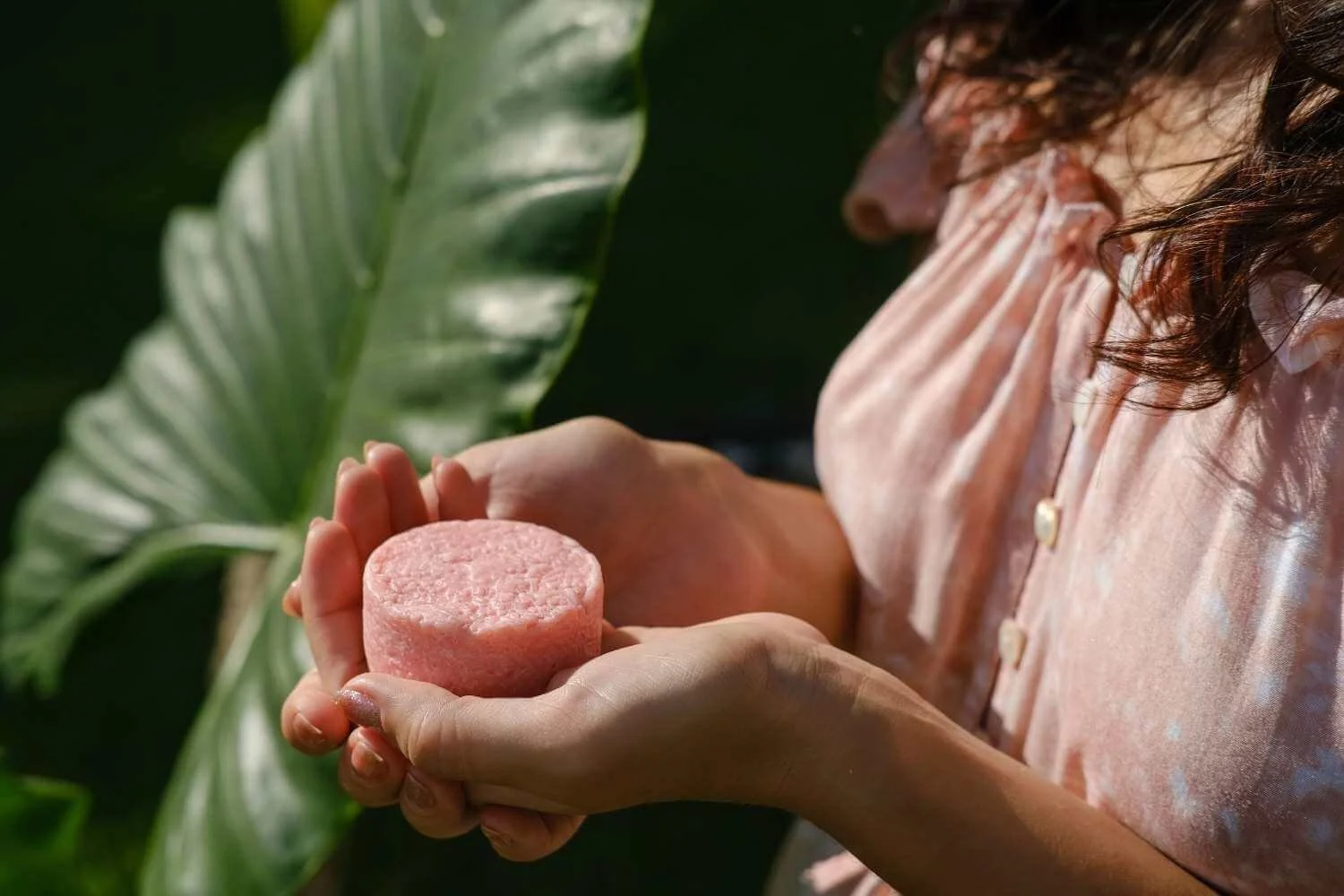Which Type of Shampoo Bar is Best For Your Hair
Do you want to know which type of shampoo bar is best for curly, wavy, or straight hair? Or maybe you want to know which solid shampoo is free from or contains sulfates? This blog post will help you work out which shampoo is best for your hair type.
This blog uses affiliate links to eco-friendly retailers, all advertising is ethically-screened and supports the running of this site.
I know what you’re going to say, there are different types of shampoo bar - whaaat?!
As if zero-waste lifestyles aren’t confusing enough.
If you’re new to shampoo bars or are struggling with the transition, this post is for you.
First I’m going to explain which sort of shampoo is best for curly, wavy, or straight hair because different types of hair have different needs.
Then I will break down the three types of solid shampoo and share the benefits (and the problems) with each.
I will also help you recognise the ingredients so you can make an informed decision when buying zero-waste hair products.
Keep reading to learn which shampoo bar is best for your hair type.
COMING UP
Shampoo bars for curly, wavy, or straight hair
What are the three types of shampoo bars?
Shampoo bar type 1
Shampoo bar type 2
Shampoo bar type 3
Why is my hair greasy after washing?
- What are silicones?
- Do I need a clarifying shampoo?
1. Shampoo bars for curly, wavy, or straight hair
Working out which shampoo bar is best for your individual hair type might feel a bit overwhelming, but hopefully, by the end of this blog post, it’ll be a little easier.
The first thing you need to know is what type of hair you have.
shampoo bars for Curly hair
Many people who think they have curly hair actually have wavy hair. If your hair looks curly but doesn’t spiral from the root then it is probably 2b or 2c wavy hair and you need different products than curly hair (3a - 4c) to look your best.
You might be thinking why is this woman acting like she knows my hair better than me!? And that’s fair enough, I’m just a random person on the internet, after all.
I’m not telling you what to call your hair, just suggesting that products designed for curly hair may be too moisturising and heavy for your hair.
If you have type 3 or 4 curls, look for a “low-poo” shampoo bar which is sulfate-free and free from “bad” alcohols which are drying. If you have used lots of ingredients that build up (silicones, coconut oil, waxes) you may need to do a clarifying or sulfate shampoo wash first and repeat this occasionally.
For a list of sulfate-free bars where you live, skip ahead to the “shampoo bar type 2” category.
For a list of bars that contain SLS-free sulfates (basically ones that clean better but shouldn’t irritate sensitive scalps), skip to the “shampoo bar type 3” section.
Shampoo bars for wavy hair
There are two options for washing your wavy hair with shampoo bars.
The first method is to use sulfate-free shampoo and then do a clarifying wash once a month (or whenever your hair feels limp). This works for lots of people.
However, many people with wavy hair have found sulfate-free products to be too heavy for their hair because the surfactants (the cleansing shampoo ingredients) are too mild to wash out styling products and natural butter or wax.
This is why it is important to know whether you have curly or wavy hair. The products designed for curly hair are heavy and can weigh down wavy hair.
So method number two is to choose a bar that contains sulfates. Sulfates have a bad reputation, mainly SLS, but there are lots of different, non-irritating ones available.
Did you know that there are some sulfate-free surfactants that are harsher than SLS? It’s true!
Either way, all the shampoo bars in my list of bars with sulfates (shampoo bar type 3 section) are free from sodium lauryl sulfate (SLS). It’s actually really hard to find a shampoo bar that contains SLS.
Shampoo bars for straight hair
Just like with wavy hair, if your hair is straight, you can probably choose between sulfate-free and sulfate shampoo bars with few issues.
However, if you have naturally oily or greasy hair, you may want to use a bar with sulfates.
As you know, the oil in your hair is made on your scalp. When your hair is straight, it can move down your hair much faster, making hair get greasy.
Sulfate-free bars have mild shampoo in them and when you combine this with lots of moisturising ingredients (often present in shampoo and conditioner bars), it might not be good enough to cut through the oil and grease.
So if you have fine, oily hair, a sulfate-free bar might not work for you.
Whereas, if your hair is dry, damaged, or brittle, a sulfate shampoo might be too harsh for you (although I’d recommend using one with protein if this is the case).
I’ve got thick, straight hair that isn’t oily and I’ve got no issue using sulfate-free shampoo bars, but over time I do find I need a clarifying wash with some bars.
Alternatively, I can use bars with sodium coco sulfate (SCS - a mild alternative to SLS) that are formulated with lots of ingredients and my hair remains in good condition.
Bars that are made with a lot of SCS and minimal ingredients (like Gruum) leave my hair feeling a bit too squeaky clean though. So I’d recommend those if your hair is on the fine, oily side.
2. What are the three types of shampoo bars?
There are three types of plastic-free shampoo bars:
Oh-poo (made from soap)
Low-poo (sulfate-free shampoo)
Full-poo (shampoo with sulfates)
I know… they sound ridiculous, but hey, I didn’t name them. The difference between the three types of solid shampoo is the ingredients. This is the area that gets confusing for most consumers.
Type 1 - ‘Oh-poo’ shampoo bars
Every time I say “Oh poo” I need you to pause and imagine a wah wah sound effect. Oh-poo bars are the reason most people fail at shampoo bars everywhere no matter what your hair type is. Wanna know why?
THERE IS NO SHAMPOO IN THEM.
If you are completely new to shampoo bars you’re probably thinking - “ok? Why so much drama, Sophie?”
WELL. You would understand if you’d spent many months with waxy hair hoping that if you just wait a little longer something will click and you will complete the infamous transition phase. Oh-poo bar - cough - soap makers** often lure you in with the promise of a ‘natural’ product and generic claims like:
“shampoo is full of toxic chemicals”
“you just need an apple cider vinegar rinse”
“your hair has to adjust to not using chemicals”
Usually without any evidence to support their statements. So you go along with it as long as you can. Or until your boss reminds you it’s in your contract to have good personal hygiene…
** Please note: there are plenty of great soapmakers out there that this does not apply to.
In recent years, the anti-shampoo trend has lead to all kinds of ‘woo’ popping up on the internet. Even I was swept up by it at one point and spent months trying to transition my hair with various edible concoctions. I gave up in late spring when it became too hot to wear a hat in public.
Oh-poo bars (wah wah) are ruining people’s zero waste journey because nobody wants to look like they’ve dunked their head in a deep fat fryer. Little do they realise they are washing their hair with a bar of soap.
Yep. Oh-poo bars are lovely, little bars of saponified oils.
The ingredients list will contain (possibly in Latin) a whole bunch of oils and butter, like coconut oil, olive oil and shea butter.
Pros & cons of oh-poo bars
Pros:
Cheap
Can be locally-made
Usually small businesses
Environmentally friendly
You can use one bar for everything
Cons:
Leave a waxy residue on most people’s hair
Rarely clean hair
Unlikely to work in a hard water area
Not pH balanced
Need to use an apple cider vinegar rinse
Which bars are oh-poo?
UK:
Funky Soap bar
Primal Suds - head cave
Bain & Savon (cold pressed bars)
J.R.Liggett’s
Wild Sage and Co
Rugged Nature
US:
Bestowed essentials
Plum Brilliance
Badger
Chagrin Valley
Who should buy Oh-poo?
You could buy oh-poo if have magical, pure soft water and really don’t want to use shampoo (although I wouldn’t recommend it). You will probably need to do an apple cider vinegar wash at least once a week. Your hair might become limp or damaged over time though.
If it doesn’t work out, you can use the shampoo bar as a body wash.
TYPE 2: Low-poo shampoo bars
The next type is a “low poo” shampoo bar, which is a solid bar that contains no soap and sulfate-free surfactants.
A surfactant is a foaming shampoo ingredient that removes the grease and grime from your hair.
Sulfates are strong surfactants with great cleaning power, whereas the surfactants in low poo bars are milder.
There are 4 different types of surfactants:
Anionic - provides the best cleaning power
Nonionic - gentler cleaning
Amphoteric - very mild cleaning, usually combined with other surfactants
Cationic - they have a positive charge and stick to hair. They do not foam and are usually found in conditioners.
A common surfactant used in most “natural” sulfate-free shampoo bars is Sodium Cocoyl Isethionate (SCI) which is an anionic surfactant.
Sulfate-free bars don’t work for every hair type
While sulfates tend to get a lot of bad publicity, from what many of you have told me, sulfate-free bars don’t actually work for all hair.
From observation and my readers sharing their experiences with me, I’ve noticed that it seems to be people with fine, straight, or loose wavy hair who struggle with sulfate-free bars. Basically, hair that tends to get oily fast.
If you use a low poo bar and didn’t get along with it, you might need to swap to a bar containing sodium coco sulfate (see next section).
Pros & cons of sulfate-free shampoo bars
Pros:
They can be pH-balanced so you shouldn’t need an apple cider vinegar rinse
Soap-free
More likely to clean your hair
Cons:
Don’t work for every hair type
Can be harder to understand the ingredients list
More expensive
The cheaper options are often made using palm oil derivatives - check the company’s policy to see how this was sourced (however, expect minimal information as the derivatives are extremely hard to trace).
Which shampoo bars are low-poo?
UK:
Hairy Jayne - use SOPHIE15 for 15% off
KIND2 - hydrating one, sensitive one - use SOPHIE15 for 15% off
Faith in Nature - a cheaper option, contains palm oil
USA:
Zero Waste Outlet (Upfront)
Ethique - Tone it down - brassy hair
Canada:
Who should buy a sulfate-free “low poo” bar?
If your hair type is curly or coily, you may want to choose a mild sulfate-free shampoo. If your hair is straight or wavy and you don’t want to use sulfates, then a low poo bar will work for you.
Over time, you will probably need to do a clarifying wash, regardless of hair type.
Type 3 - Full-poo shampoo bars
Full-poo bars give the deepest clean because they contain sulfates. There are lots of different sulfate ingredients and they are all a bit different.
SLS is the surfactant everyone has heard of because it has a pretty bad reputation, however, SLS isn’t actually in the majority of shampoo bars.
SLS is an anionic surfactant that can cause some skin irritation in people with sensitive skin. It may also clean your hair a little too well and cause it to become dry.
Not all sulfates are the same and I have happily used shampoo bars with sodium coco sulfate with no issues whatsoever. I am more likely to react to other ingredients, like essential oils.
If you have curly hair that is prone to being dry, you should avoid regular washing with strong sulfate shampoo bars because it could make your hair more dry. Curly hair needs to retain its moisture and sulfates can strip away the natural oils.
Low poo bars are not all made equally though. Some shampoo bars contain smaller amounts of multiple surfactants and others contain a high percentage of one.
For example, some Grumm shampoo bars have just two ingredients - sodium coco sulfate and coconut oil. Whereas Ethique has 3 types of surfactants (one is usually sodium coco sulfate) along with various other ingredients.
That’s why it’s important to know your individual hair.
A good shampoo bar will have been formulated and pH balanced so the ones that contain fewer ingredients might be stronger but don’t necessarily result in a better product.
Examples of sulfates:
sodium lauryl sulfate (SLS)
sodium laureth sulfate (SLES) - ethoxylated = milder on skin
sodium coco sulfate (SCS) - most commonly used in shampoo bars
ammonium lauryl sulfate (ALS)
ammonium laureth sulfate (ALES)
Is Sodium coco sulfate natural?
People often use the term “natural” to sell or criticise a product and one of the ways oh-poo shampoo makers criticise the competition is to say proper shampoo bars aren’t natural.
No, sulfates like sodium coco sulfate are not natural. They are synthetic detergents (syndets). But most ingredients in hair products aren’t fully “natural” either.
Wanna know what is natural? A tree! ‘Natural’ is an unregulated marketing term.
Sodium coco sulfate is derived from coconut and goes through a chemical process to become a surfactant.
Natural soap can be derived from coconut, but still goes through a chemical process to become sodium cocoate soap.
Soap doesn’t grow on trees, it is manufactured, yet soap makers regularly scaremonger people into believing only soap is natural.
Basically, there is a lot of false or misleading information on the internet so you shouldn’t believe everything you read.
I have also shared my thoughts on sodium coco sulfate (SCS) being similar to sodium lauryl sulfate in my post on transitioning to a shampoo bar in hard water.
Pros and cons of sulfate shampoo bars:
Pros:
Very effective at cleaning
It may be the only type of bar that works for some hair
Removes styling products and leave-in products better
Cons:
Some sulfates may strip the natural oil from some people’s hair
Some may irritate your scalp
Not usually suitable for regular washing off curly or coily hair
Which bars are full-poo?
UK:
KIND2 - rebalancing (SCS) - use SOPHIE15 for 15% off
grüum (SCS) - I’d recommend this for oily hair
Beauty Kitchen (SCS)
USA:
Life Without Plastic (SCS)
Good Juju (SCS)
Tangie (SCS)
Suds & Co (SCS) - use sustainablylazy for 10% off
Ethique - St Clements (clarifying), Frizz Wrangler, Heali Kiwi (dandruff)
Canada:
Zero Waste MVMT (SCS)
Nature’s Aid (SCS)
AU:
Who should buy full-poo shampoo bars?
If you have waxy, greasy hair after trying low-poo bars you may need a shampoo bar with a more effective surfactant. If you don’t have curly hair, full poo could be the type for you.
If you usually have oily hair, you may be fine with SLS but I’d avoid it if you have dry hair or a sensitive scalp.
If your conditioner has silicones in it (this includes solid forms too) then you will need a full-poo shampoo bar to avoid looking like a greasy waxy mess.
Tap this image to pin it to your eco-friendly Pinterest board:
3. Why is my hair still greasy?
If your hair has become greasy since switching to sulfate-free shampoo (whether that’s liquid or solid) it could be because you’ve got a build-up of silicones or natural ingredients and your replacement doesn’t have strong enough surfactants to remove it.
The solution is to do a clarifying wash. These can be done every time your hair gets waxy or limp, which may not happen often, or they can be done once a month.
What are silicones?
Silicones are an ingredient (a polymer like rubber or plastic) added to mainstream shampoo and conditioner to give an illusion of healthy hair. They work by forming a waterproof layer around the hair cuticle. If you have dry, frizzy hair, a silicone coating can make it look shiny and smooth.
It sounds good until you remember most are waterproof so can be extremely hard to wash out. Over time silicone can build up in your hair and can turn it greasy and limp. It’s important to note that not all silicones are the same and there are some more expensive varieties that wash out easier.
What is a clarifying shampoo?
A clarifying wash can be done with a special shampoo called a clarifying shampoo. It removes build-up from hair styling products, treatments, shampoo and conditioners.
Some people choose to do a monthly clarifying wash with a sulfate shampoo and that is enough for them to keep their hair feeling fresh.
Don’t be fooled into thinking a clarifying shampoo without sulfates is going to be milder though. Some traditional clarifying shampoos have harsher surfactants than SLS, like Olefin sulphonate.
Because of this, it is important to do a deep condition after doing a clarifying wash to prevent your hair from going dry.
Should I do a clarifying wash?
Clarifying shampoos deep cleanse your hair to remove product buildup and residue. You should do a clarifying wash if your hair feels extra oily, limp, or waxy.
If you regularly co-wash your hair or use products with silicones or soap to wash your hair then you will need to do clarifying washes sometimes.
4. Which shampoo bars are clarifying?
If you want to swap to solid bars for environmental reasons but need to do a clarifying wash, you’re likely wondering if any bars are clarifying.
The main ingredients to look for are sulfates (SLS, SLES, SCS) or Olefin Sulphonate in sulfate-free products. The surfactants need to be high on the ingredients lists and there shouldn’t be lots of moisturising ingredients, like coconut oil.
Here are a few I’ve found labelled as clarifying:
UK
Ethique’s St Clements Clarifying bar - contains non-irritating milder sulfate (sodium coco sulfate). Doesn’t dry out my hair using it regularly so is not as “strong” as liquids. (Ethique have stopped selling in the UK now)
Kitsch Clarifying Solid Shampoo - this contains no clarifying ingredients, it looks like a normal sulfate-free shampoo bar. This is an American brand so check the stockist is from the UK
Percy and Reed - describe the formula as clarifying. Contains sodium coco sulfate.
US:
Ethique’s St Clements Clarifying bar - contains non-irritating milder sulfate (sodium coco sulfate). Doesn’t dry out my hair using it regularly so is not as “strong” as liquids.
Kitsch Clarifying Solid Shampoo - this contains no clarifying ingredients, it looks like a normal sulfate-free shampoo bar.
Clarifying Shampoo Powder - this is an actual clarifying shampoo, but in powder form instead of a solid bar. It is sulfate-free and plastic-free.
Superzero clarifying shampoo bar - contains sodium coco sulfate
If you think you may have product build-up or your shampoo bar isn’t working, check out my latest post: Why isn’t my shampoo bar working?
How’s your plastic-free hair journey going? Have you worked out which type of bar suits your hair?
If you found this blog post useful you can support my work by buying me a coffee.

















